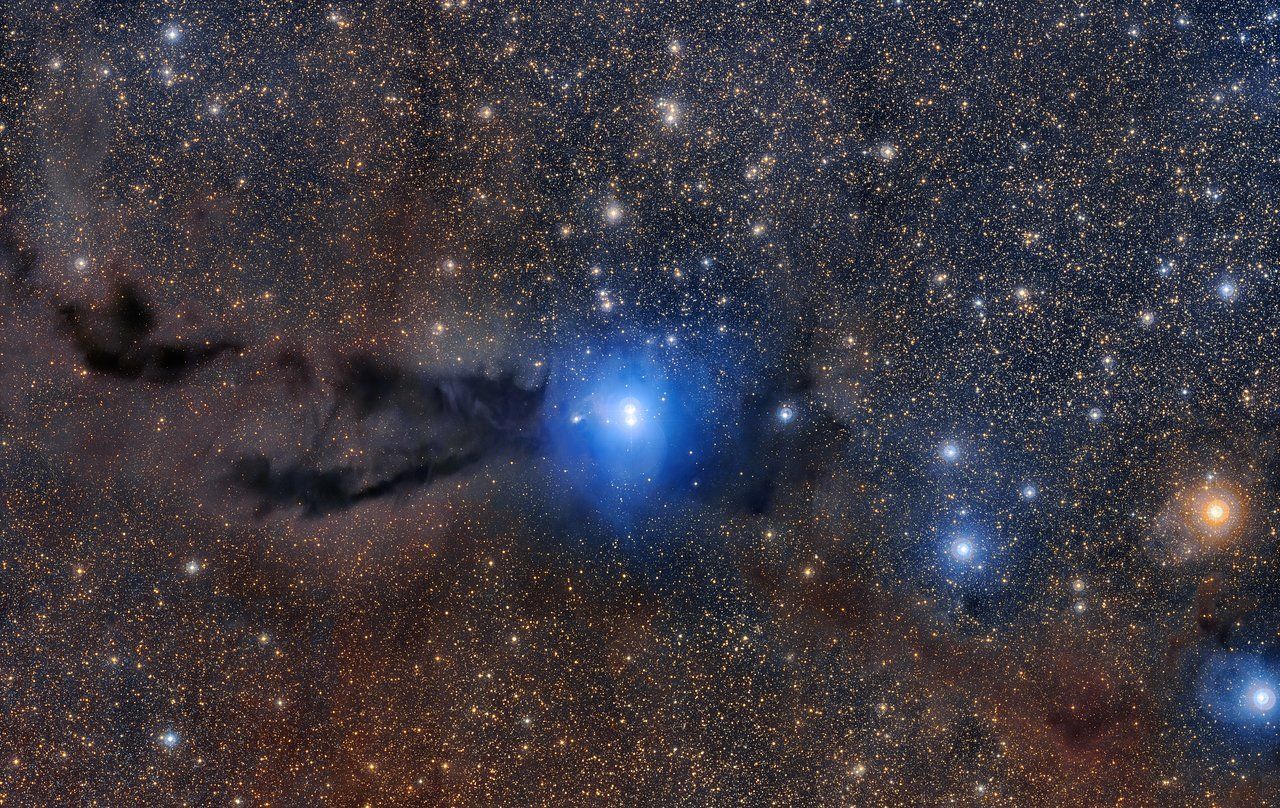
Updated | A swathe of dark cosmic dust unfurls as a misshapen snake across the Lupus 3 region of space. The nebula sucks the dazzling light from newborn stars in this picture released by the European Southern Observatory.
The picture uses images from the VLT Survey Telescope in the Atacama Desert, Chile, and the MPG/ESO 2.2-metre telescope at La Silla, also in Chile. This is the most detailed picture ever taken of Lupus 3.
Lupus 3 sits in the larger Lupus Clouds complex in the Scorpius constellation, about 600 light-years from Earth. Named for the constellation next door, "Lupus" is Latin for wolf.
Nebulae are massive stretches of gas and dust, which can reach hundreds of light years in length. Most radiate with the light of many hot stars, while "dark" nebulae like Lupus 3 absorb and scatter light as it travels through the cloud.
Some dark nebulae—such as the Milky Way's Coalsack Nebula and Great Rift—can be seen with the naked eye.
Read more: Ancient spiral galaxy born 11 billion years ago could tell us how star clusters form
By building detailed pictures of star nurseries like Lupus 3, scientists can better understand the process of star formation itself.
"Images like those of Lupus 3 reveal many of the ingredients involved in the formation and early life of stars. In it we see the parental gas and dust, the newly formed stars, and some of the energetic phenomena associated with young stars, like jets," Fernando Comerón, an ESO astronomer who has studied Lupus 3, explained to Newsweek. "Lupus 3 is one of the nearest star-forming regions in the neighborhood of the Sun, and it is therefore among those that we can study in most detail."
This nebula is an active star formation region. Dense clumps of the nebula can collapse, producing extremely pressurised conditions. A protostar eventually forms in the hot, dense core of the cloud.
These can eventually lead to stars like the two incredibly bright celestial bodies sitting at the center of this image. As such stars grew older, they become hotter and brighter. Their stellar winds and radiation scrubbed the nearby area clean of dust and gas, letting their brilliant light poke through.
This article has been updated to include comment from Fernando Comerón.
Uncommon Knowledge
Newsweek is committed to challenging conventional wisdom and finding connections in the search for common ground.
Newsweek is committed to challenging conventional wisdom and finding connections in the search for common ground.
About the writer
Katherine Hignett is a reporter based in London. She currently covers current affairs, health and science. Prior to joining Newsweek ... Read more
To read how Newsweek uses AI as a newsroom tool, Click here.








